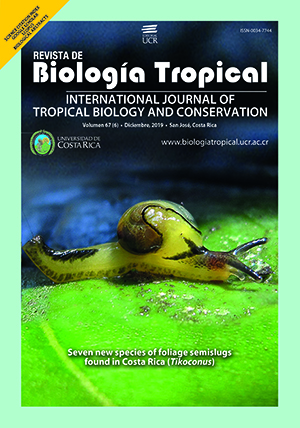Abstract
We explain through potential distributions and changes in altitudinal variation, the possible impacts of climate change in an endangered micro-endemic rodent of Mexico with narrow altitudinal range, Heteromys nelsoni and a rodent with a wide distributional and altitudinal range, Heteromys goldmani. We obtained historical and current records of both Heteromys species. Potential distribution models were generated using Maxent, including altitudes for each species and bioclimatic layers. We determined the Extent of Occurrence and Area of Occupancy for H. nelsoni according to the criteria of the IUCN in order to generate information about its risk status. The altitude is not a variable that determines a shift in the distribution caused by climate change. In contrast, the temperature and precipitation are important for the potential distribution of both Heteromys species. The future changes in climatic conditions will reduce the area of suitable habitat for H. nelsoni and will favor the presence of H. goldmani. The distribution surface is not greater than 33.44 km2 for H. nelsoni. Therefore, is urgent to re-evaluate their conservation status by the IUCN, mainly in its B criterion, and to take specific actions for their conservation. We suggest the creation of a terrestrial protected area.
##plugins.facebook.comentarios##

This work is licensed under a Creative Commons Attribution 4.0 International License.
Copyright (c) 2019 Consuelo Lorenzo, Arturo Carrillo-Reyes, Dr., Tamara Rioja-Paradela, Dra., Eugenia Sántiz-López, Dra., Jorge Bolaños-Citalán, Biol.






